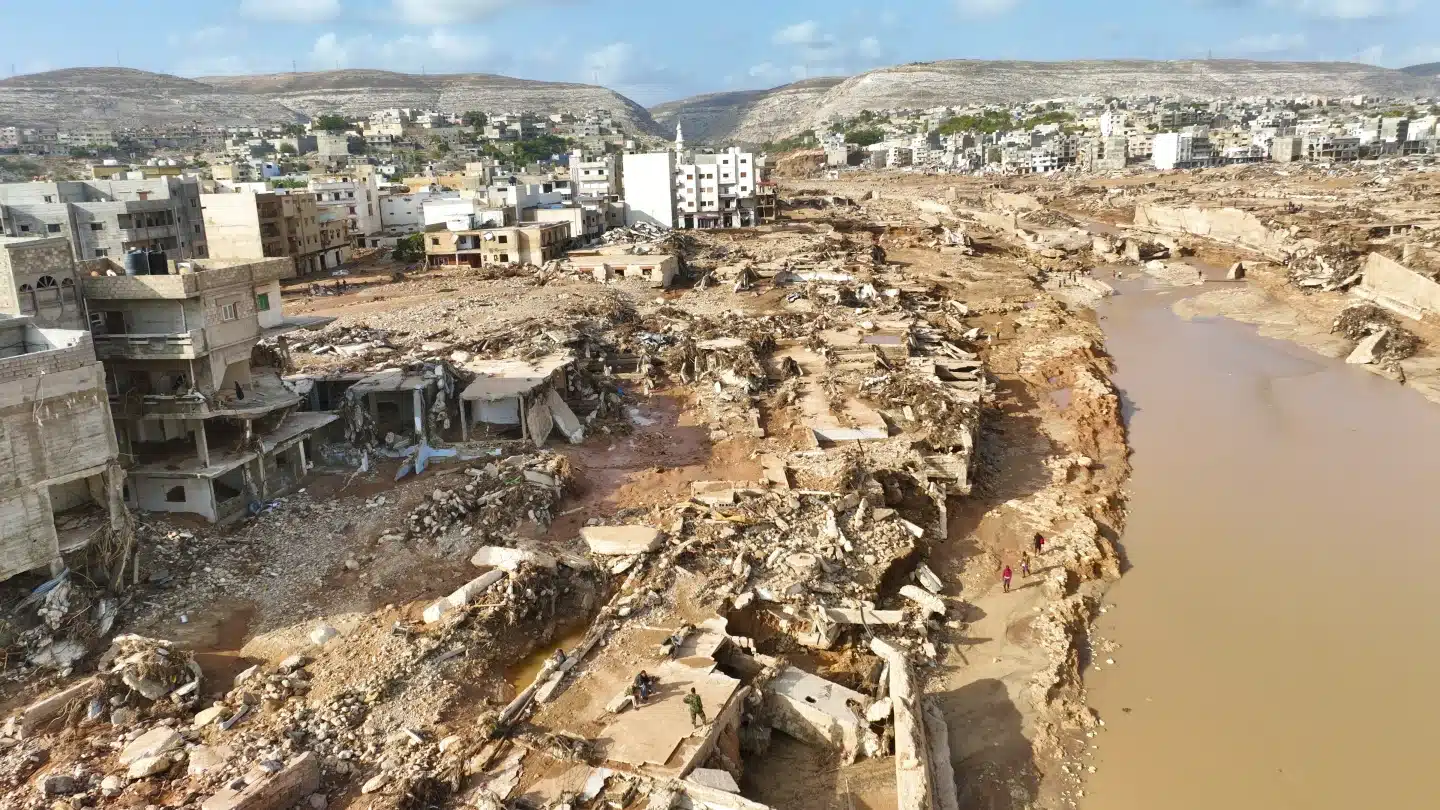The structural integrity of the Derna dams had been under scrutiny for nearly four decades, revealed Al-Sediq Al-Sour, a Libyan state prosecutor. This revelation comes amidst ongoing searches for victims from the catastrophic floods last week.
The initial concerns over the dams’ structural health can be traced back to 1986. These were built in the 1970s by a Yugoslavian firm and underwent substantial damage following a powerful storm. An official investigation authorised by the Libyan administration a decade afterwards disclosed cracks and fissures in their construction.
Fast-forward to 2007, Arsel Construction Company, a Turkish enterprise, was brought on board to oversee the maintenance of these dams and to construct an additional one. While the company’s official site asserted the completion of the project by November 2012, recent satellite imagery indicates the absence of the third dam. Attempts to get a statement from Arsel went unanswered.
The tumultuous NATO-endorsed revolution and subsequent civil strife in 2011, resulting in the ousting of Muammar Gaddafi, led to many foreign businesses retreating from Libya.
Post this, nearly £1.6m was designated for the dams. However, a state audit from 2021 suggested that the maintenance remained lacklustre. Al-Sour indicated that a thorough investigation surrounding the dam’s failure and fund appropriation is imminent.
The catastrophic flood led to the death of over 11,000 individuals, and an alarming 10,000 are yet to be accounted for, leaving Derna in ruins.
Othman Abduljaleel, the health minister of Libya’s eastern regime, confirmed on Sunday the interment of 3,283 individuals. Many of these burials took place in large communal graves on the outskirts of Derna, whilst others were transported to neighbouring towns.
The relief efforts are continuously impeded by an absence of coordination, challenges in channeling aid to the most affected regions, and the annihilation of Derna’s infrastructural foundations, inclusive of multiple bridges.
Preceding the onslaught of Storm Daniel, the divided Libyan leaderships – one in the west, underpinned by assorted armed factions, and another in the east, aligned with the so-called Libyan National Army – disseminated contrasting advisories.
Derna’s local council proactively encouraged citizens to vacate coastal zones. In contrast, numerous locals cited receiving mobile notifications persuading them to remain indoors.
Activists now champion the cause for an international inquiry, expressing concerns about the efficacy of a domestic examination in a nation so polarised.
Given the political instability and entrenched internal conflicts, Libya has been a fertile ground for unchecked corruption within its public institutions, as highlighted by Transparency International.
On another note, the United Nations Support Mission in Libya expressed apprehensions regarding potential water contamination post the dam’s failure, predicting another dire crisis. Haider al-Saeih, at the helm of Libya’s Centre for Combating Diseases, reported on television that approximately 150 individuals in Derna contracted diarrhoea from tainted water consumption.
Image Credit: AP Photo/ Jamal Alkomaty



















